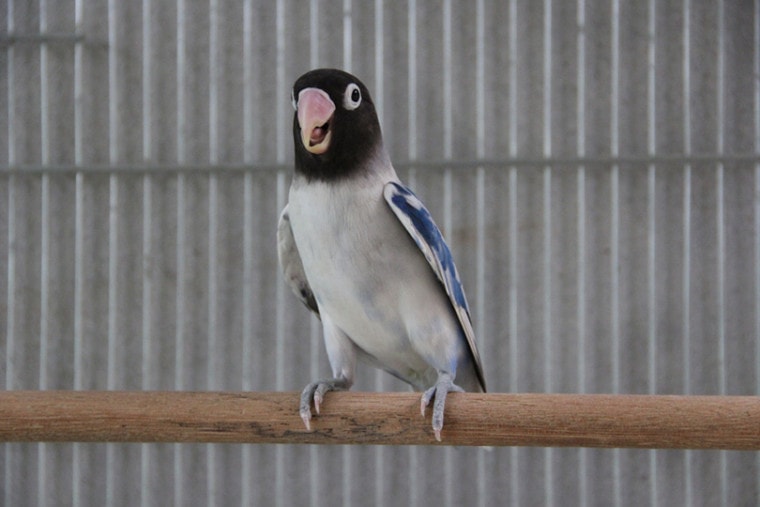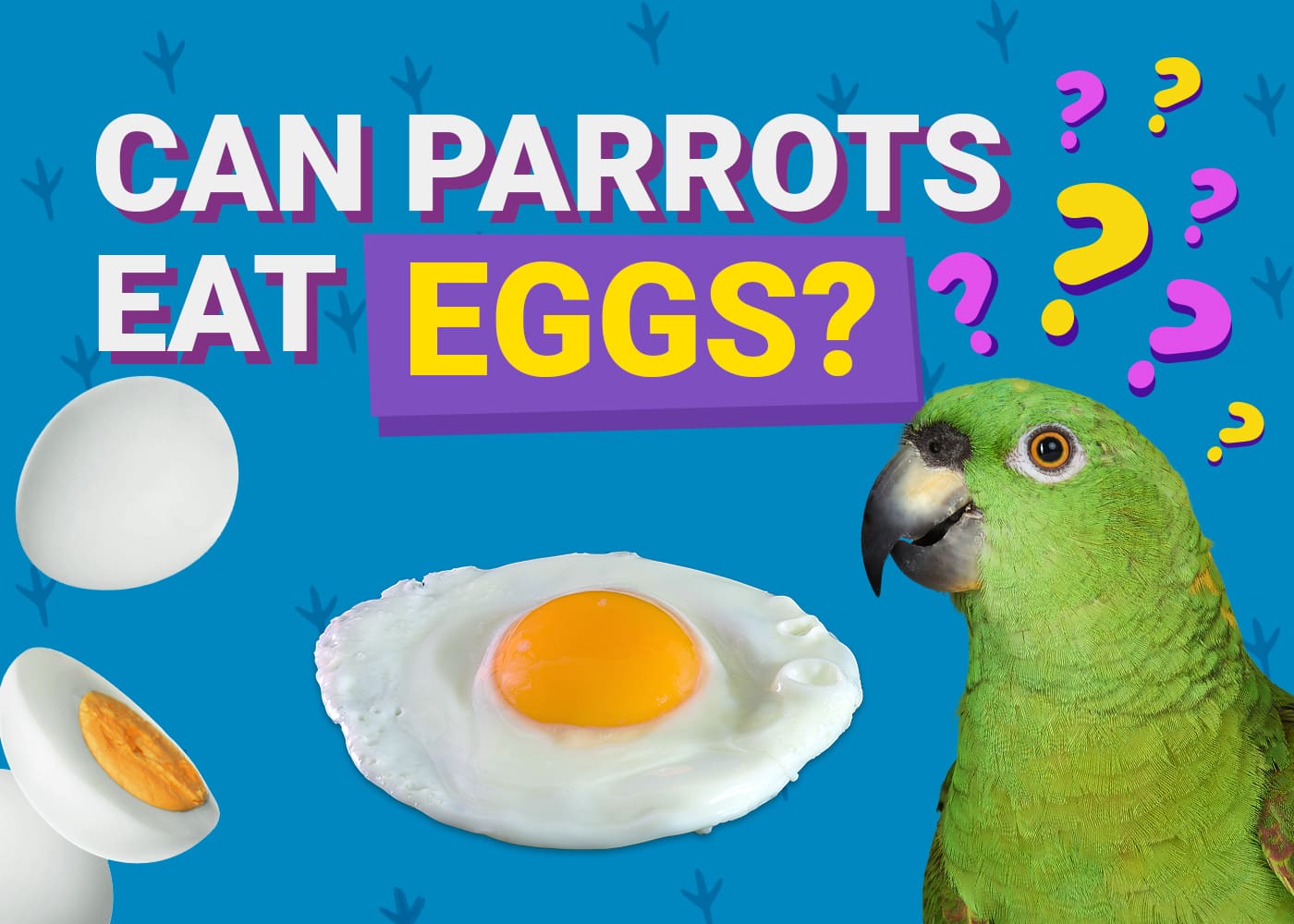
Lovebirds come in all kinds of crazy variations that are beautiful to behold. The Pied Lovebird is no exception. You could describe pied coloration as a faded, nearly marbled coloring.
Pied lovebirds can come in all sorts of colors, but the patterns remain similar. You can enjoy this faded, tussled look as many bird lovers do.
Species Overview
| Common Names: | Lovebird |
| Scientific Name: | Agapornis reseicollis |
| Adult Size: | 7.5 inches |
| Life Expectancy: | 10-15 years |
Origin and History
Lovebirds are monogamous sweethearts that have captivated bird lovers with their soft nature. Popular in the bird trade, you can see these tropical cuties in pet shops all over.
Lovebirds are native to the toasty, humid climates of Africa and Madagascar. They are interestingly in the Old World Parrot family, known as Psittaculidae, and nine species in all.
In the wild, these little herbivores spend time amongst their own kind, snacking on grasses, fruits, and veggies. Naturally, they crave socialization and once they find their mate—they’re set for life.
Since lovebirds began thriving in captivity, breeders have tried their hand at many pattern and color choices.
The pied color mutation is an achieved look breeder’s developed through selective breeding.
Pied Lovebirds Colors and Markings

Pied lovebirds are a color mutation that creates a patchy color pattern. These traits can be recessive, dominant, or clearflight, depending on the gene combination.
Recessive babies are much less common but can be present as long as the dominant genes don’t exceed two.
Pied lovebirds exhibit an excellent marbled color combo with many potential outcomes. Generally, these markings have no rhyme or reason, creating a scattered color theme. Most commonly, pied lovebirds are yellow, green, and blue.
Where to Adopt or Buy a Pied Lovebird
If you have your heart set on this mutation and want to shop around, you definitely have some options. Browse through all your possibilities to get a top-quality lovebird with a charming personality and pied pattern.
Local Breeder
There are avian breeders globally that specialize in lovebirds. Typically, they have hatchlings—and sometimes adults to place. If you find a breeder near you, you can purchase the bird of your choosing.
If you buy from a local breeder, you can expect to pay $75 to $250.
Shelter / Rescue
It isn’t as common to find lovebirds in shelters or rescues—but it is possible. If you are lucky enough to find some birdies in need of a new home, they will probably come with a cage—and maybe even some supplies.
Adoption can be significantly less, costing roughly $35 to $75.
Websites
Online is a hot place to shop for just about anything these days. Business owners advertise on several platforms, including their own websites.
Social media sites are also incredibly resourceful for bird enthusiasts. Don’t be afraid to shop around.
Note: We cannot recommend opting for the shipment of your pied lovebird. Many issues could transpire during transit, so we feel it’s best to avoid this method to protect the bird and your financial investment.
Conclusion
Lovebirds are remarkable creatures—from their gorgeous coloring to their sense of character. If you have a special affection for lovebirds, having a pied pair could make a smart selection.
Before committing, check all around to see what’s available to you. You may have a little wait for this mutation, but it will be completely worth your search.
You May Also Like:
- Opaline Lovebird: Traits, History, Food & Care (with Pictures)
- Lutino Peach-Faced Lovebird: History, & Care (with Pictures)
Featured Image Credit: Athit Pradasak, Shutterstock








